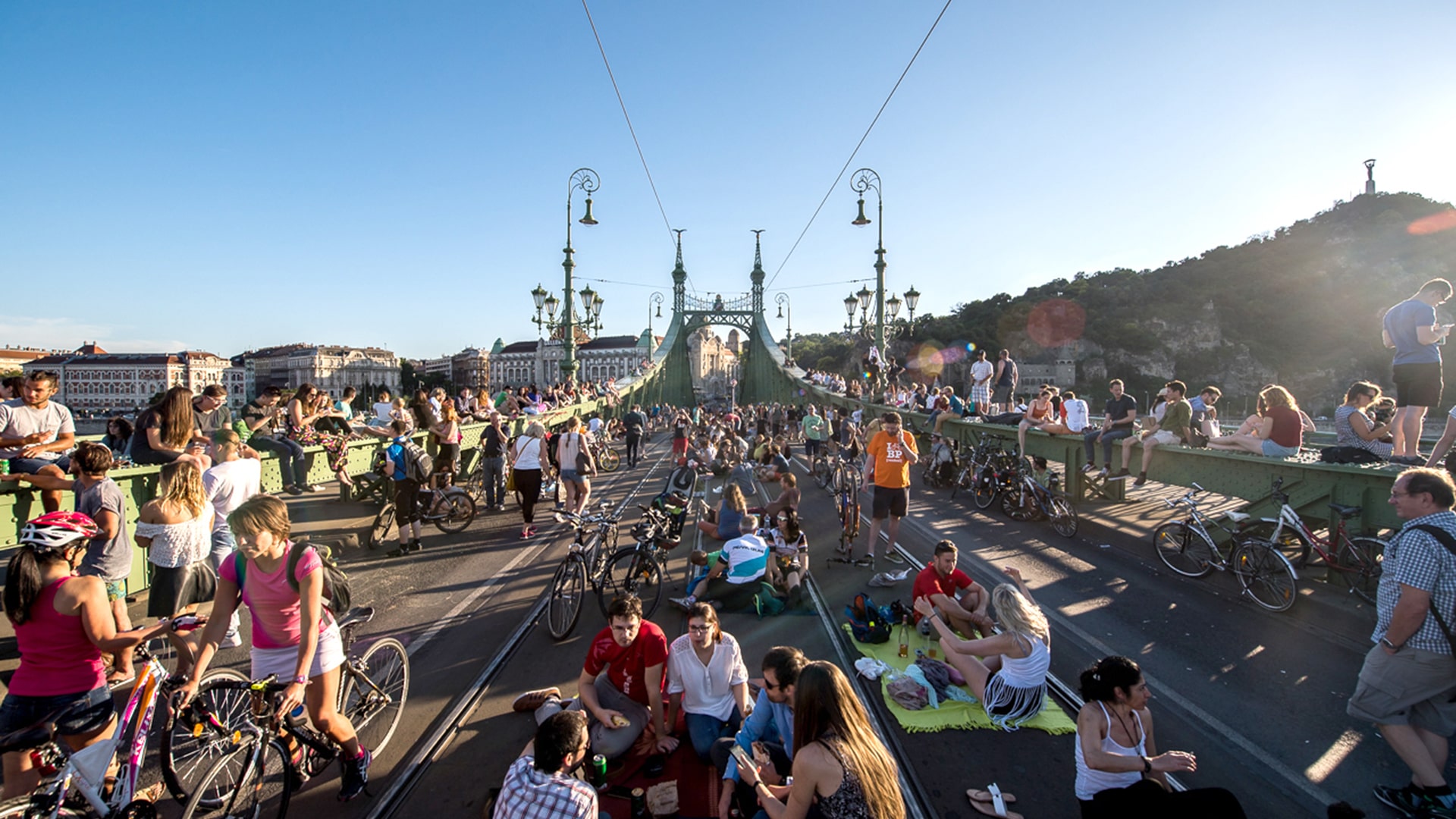
Your ultimate itinerary to exploring Budapest in 1, 2 or 3 days
O
C
Do you have a busy day ahead discovering the Hungarian capital? Are you planning a culture-packed sightseeing in the main museums of the city? Have you just arrived, wondering about the best way to get around, ticking off all the must-see sights? Either way, you came to the right place! Read on, and we’ll hit you with the best tips on what to see in Budapest in 1-2-3 days. Follow our lead, and you will love roaming the streets of Budapest and get to know the several faces of the city all the way from the hip Pest to the hilly and historical Buda. Explore the narrow, cobblestone streets and rugged yet charming ruin pubs of the Jewish district, or head to the Buda Castle for a more elegant take on the city.
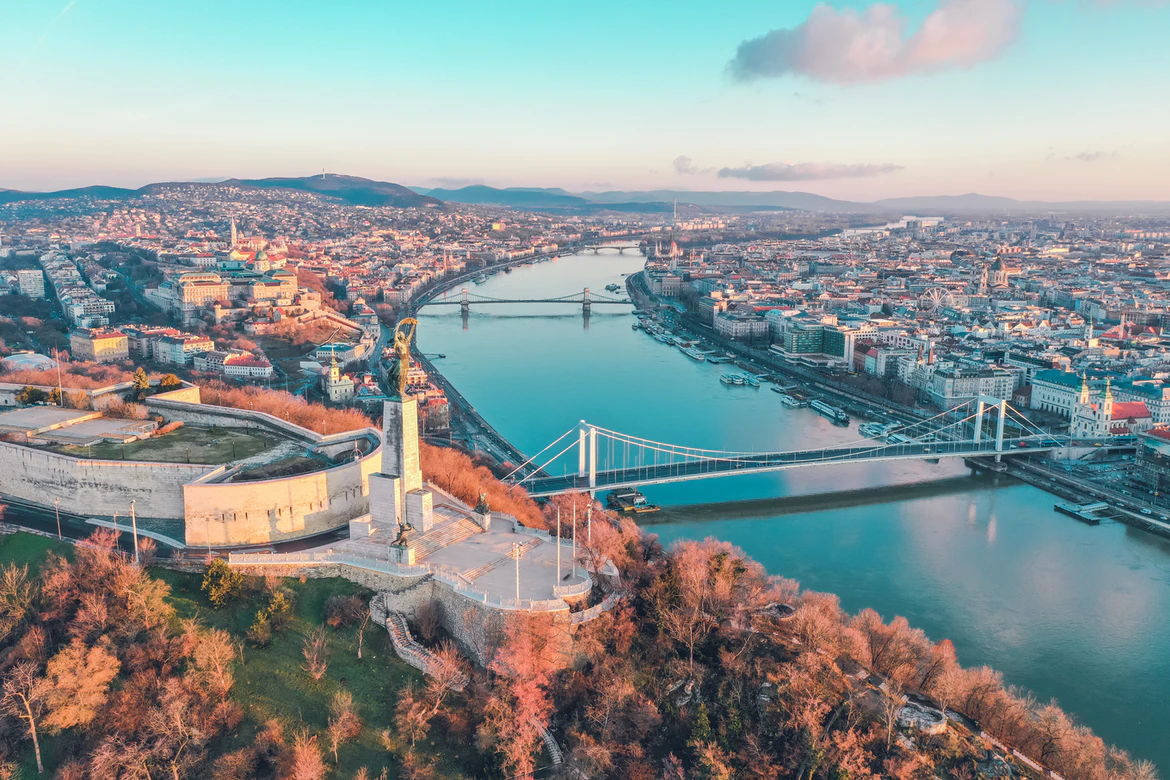
Tag along and get the best of Budapest in 1-2-3 days.
How to get around Budapest
First, you need to get in the know on how to find your way in Budapest. Luckily, you have plenty of choices day and night, from exploring the city on foot to taking the public transport and everything in between, including bikes, electric scooters, and guided hop-on hop-off bus tours for the ultimate sightseeing experience.
Without a doubt, walking is the most wallet-friendly option to get around Budapest. It gives you plenty of opportunities to get lost in the charming little streets, stroll across the stunning bridges of the inner city, and climb the hills of Buda. Yet, if you have a limited time, you may want to consider other options. For a slight acceleration, you can hop on an electric scooter or rent a bike.
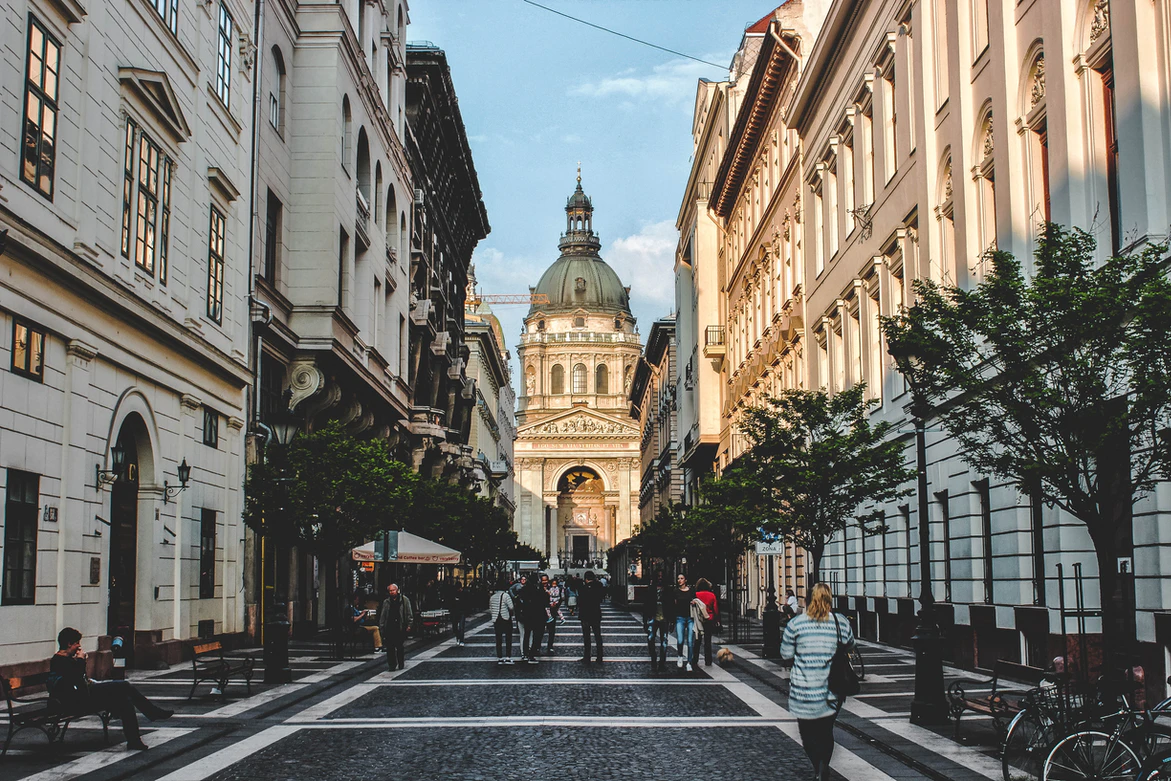
The local public transport, BKK, is cheap and pretty much accessible in all parts of the inner city, but if you choose this means of transport, get ready for a full-on Eastern-European experience. To give you a taste, the metro carriages (on the blue line) are as old as it gets with a charming touch of Russian design – for the fans of retro, it’s a must, for everyone else, probably not so much. On the other hand, there are some scenic transportation lines along the Danube that are definitely worth the ride. If you choose BKK, you will have plenty of ticket options from a single ticket for 350HUF (approx. 1 euro) to different variations of day passes for individuals and groups. Plus, EU citizens aged 65+ can use Budapest public transport for free.
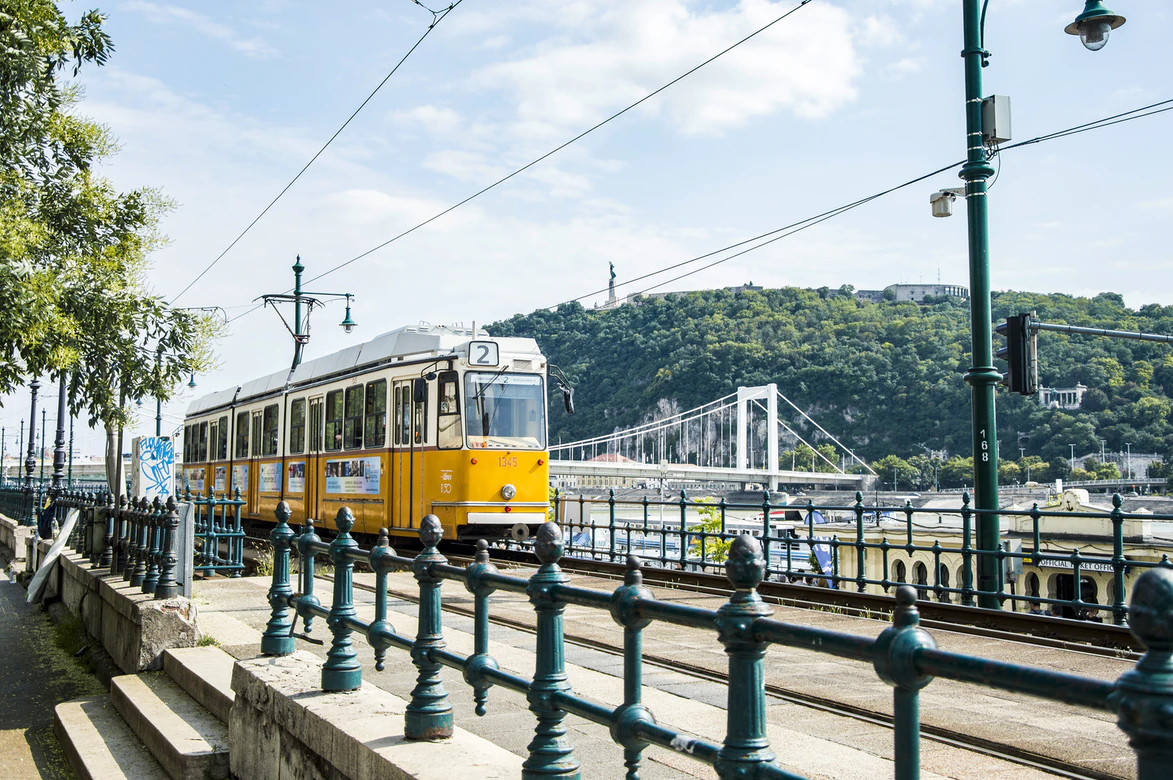
If you want to be free from the hassle of public transport, the hop-on hop-off bus tours will get you covered with a thrill ride. Offering the fastest and most convenient way to move around Budapest with 22 stops at the most important landmarks and guides in 16 languages, these tours will definitely elevate your trip. If you are interested in the methods of getting to the city from the airport, we recommend reading this article about the Budapest airport transfer choices.
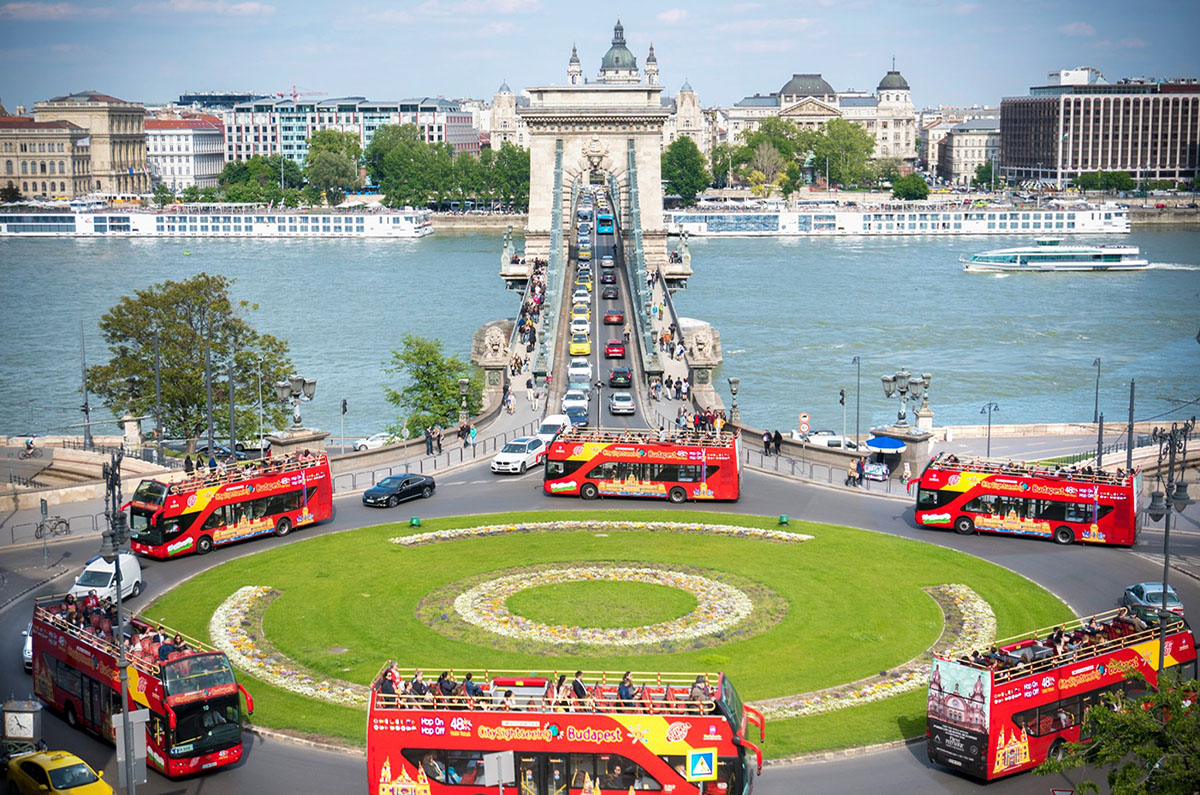
Now that transportation is sorted, it’s time to get your itinerary for your time in Budapest. Be here for 1, 2 or 3 days, we’ve collected the best sights for your short stay. Fasten your seatbelt and get ready for an extensive journey.
Things to do during your 1-day visit to Budapest
A 24-hour visit definitely doesn’t give you enough time to get to know every little nook and cranny of the city, but with a bit of planning, you can cover surprisingly lot in one day. We recommend using Deák Ferenc tér as your anchor point: metro lines meet here and the towering dome of St Stephen’s Basilica will help you find your way.
1. Start with a guided tour for a grand opening to your day in Budapest
There’s no better way to get a head start to a single-day sightseeing in Budapest than getting on a hop-on hop-off bus and taking a quick ride around. The buses start their 22-stop journey from St. Stephen’s Basilica, so after a quick peek into the cathedral, you can jump right in. Find a comfortable seat, preferably on the top and get ready for an extensive start to your trip. It’s almost unfair how many things you can do and see over the course of just a few hours. The first tour starts at 9AM, which leaves you enough time to grab a coffee and some local breakfast delicacies, like cocoa rolls (kakaós csiga) at one of the nearby bakeries.
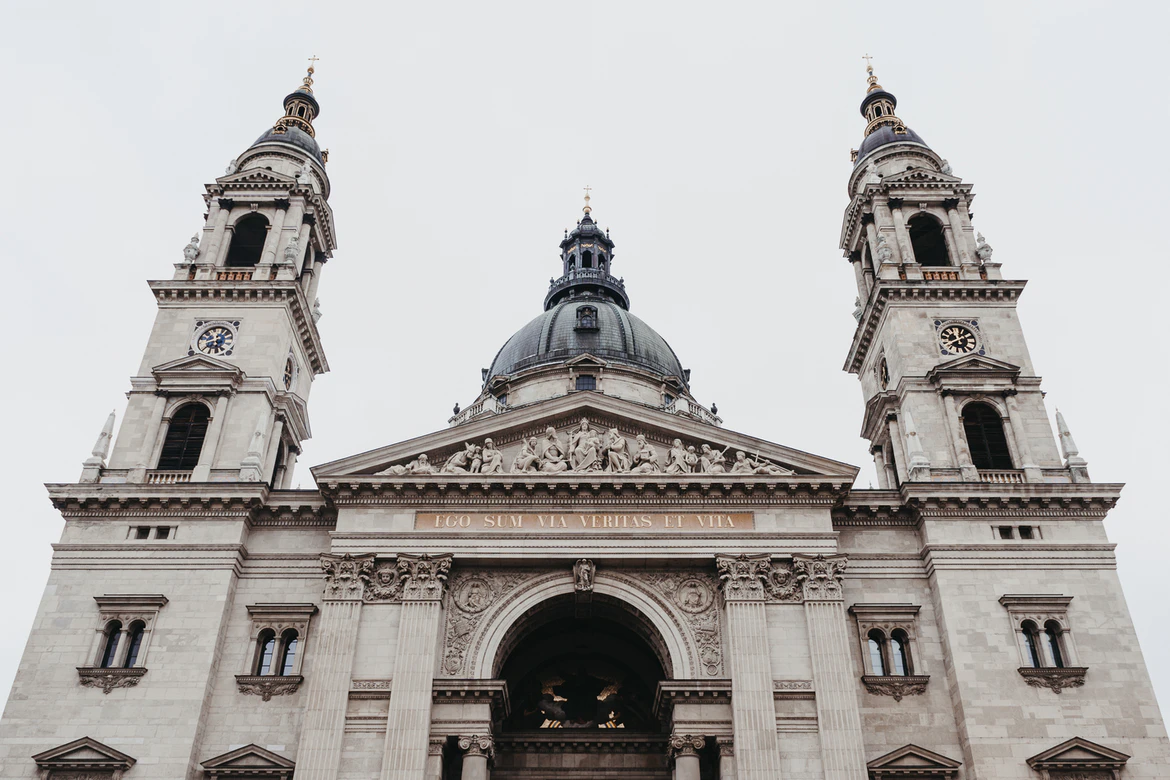
2. Get a bird’s eye view of Budapest from Gellért Hill
No city is ever fully explored without seeing it from above, and Budapest has quite a few great lookouts that are worth the climb. One of the most prominent ones is Gellért Hill, the locals’ number one spot for a view. Gellért Hill has many walking paths up to the Citadel, the most spectacular of which is the riverside one. Be sure to catch a glimpse of the Danube at each lookout as you walk up the steep stairs. Starting from the Cave Church (open Mon-Sat, 9:30-19:30), you can have a few stops with different angles to the Budapest panorama. On top, the Liberty Statue guards the hill together with the Citadel, a fort built after the Hungarian Revolution in 1848, which is unfortunately not open to the public. Nonetheless, the view speaks for itself. And if walking up is not your preference, we have good news: you can take bus Nr. 27 (from Móricz Zsigmond körtér) or a hop-on hop-off bus.
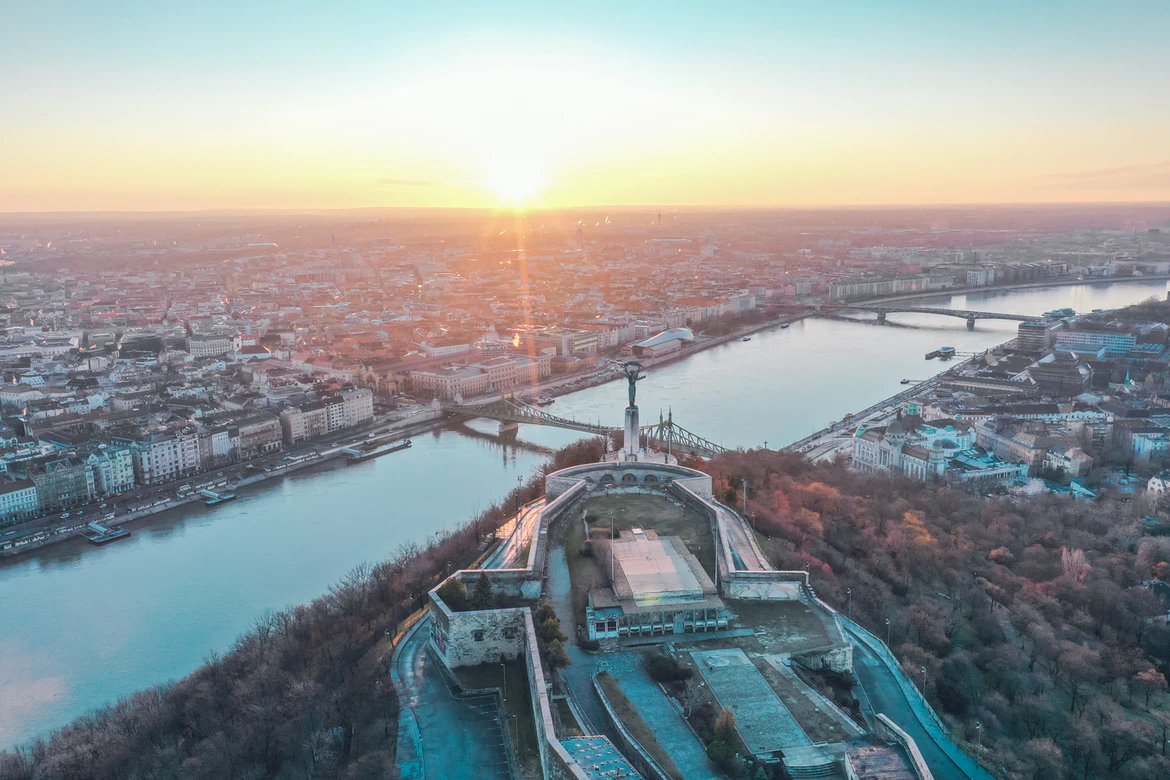
3. Discover the royal gems of the Castle District
Getting to the Buda Castle, one of the most prominent sights of Budapest, is possible from many different directions. The hidden escalator at the Castle Garden Bazaar will take you to the heart of the Castle District. Alternatively, you can go to Clark Ádám tér and take in the 360-degree view: the famous Chain Bridge and the Tunnel under Castle Hill, sided by the Zero Kilometer Stone, the reference point from which distance is measured within Hungary, and the Budapest Castle Hill Funicular (Budavári Sikló). Open every day between 7:30AM-10PM, the 150-year old funicular offers a unique ride up to the Buda Castle (single ticket: 1,400HUF, return ticket: 2,000HUF, approx. 4-6euros). For a more wallet-friendly option, you can take bus Nr. 16. With the neo-baroque Buda Castle as its utmost crown jewel, the Castle District has many other gems to discover along the cobblestone streets of the hilltop area. No matter how you got up there, you will want to explore this historical quarter on foot.
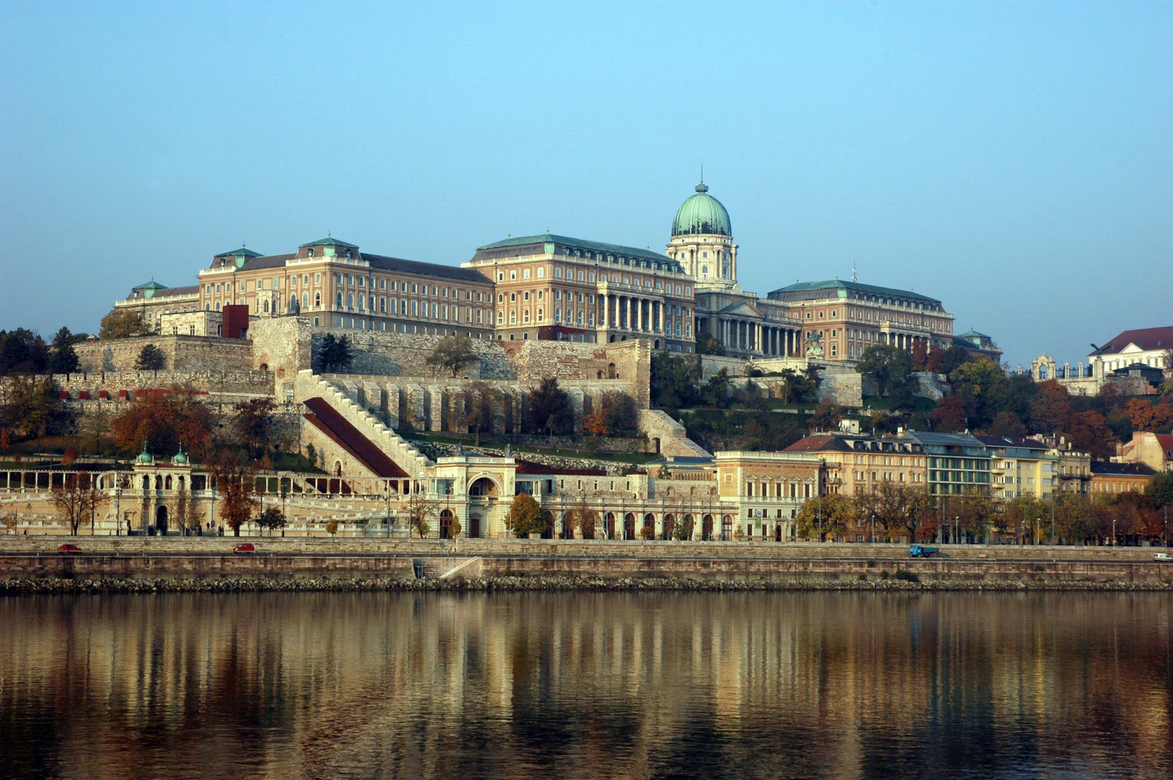
4. Marvel at Budapest from the Fisherman’s Bastion
Just outside the Buda Castle, you can walk past the charming colorful houses of Uri utca to the eminent Matthias Church, the other most famous landmark of the Castle District. The 11-century church is one of the finest pieces of Baroque architecture in Budapest. We highly recommend stepping inside for its beautiful interior: you can explore not only the church (for 1,800HUF, approx. 5 euros) but also its tower (for another 1,800HUF). A few steps away from the church is the stunning Fisherman’s Bastion, boasting one of the best views over the Parliament and the Danube. Built as a defense installation in the Middle Ages by the local fishermen’s guild, this Neo-Romanesque structure looks just like a scene right out of a postcard. For the lovers of luxury, the Bastion has an exclusive restaurant with a view. Alternatively, you can find nice cafes and bakeries at Dísz tér and Uri utca.
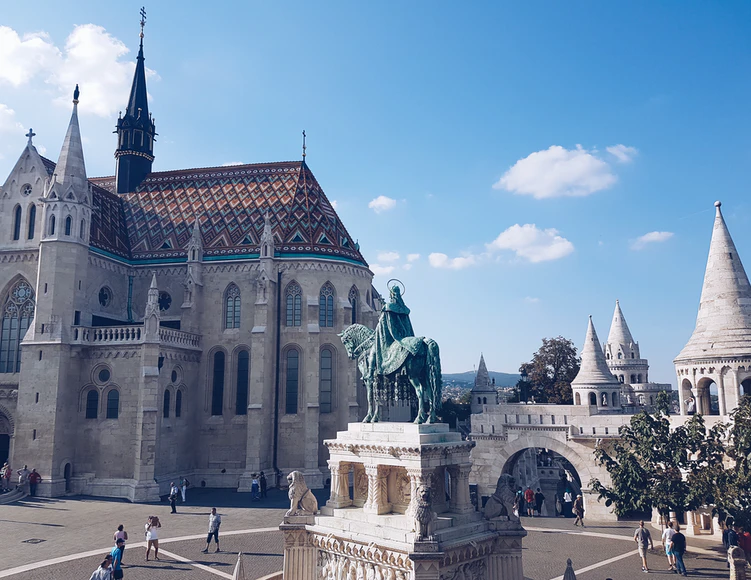
5. Walk across the Chain Bridge and greet the guarding lions
Once you’ve seen it all in Buda, it’s time to head to the Pest side of the city. Descend from the Buda Castle, and you will again find yourself at Clark Ádám tér, right in front of one of the most famous landmarks of Budapest: the Széchenyi Chain Bridge. Guarded by two majestic lions on both sides, it was the first permanent stone bridge connecting Buda and Pest. Rumor has it the lions lack their tongues. The truth, however, is that they do have their tongues, but they are only visible from above. Lit by night, the bridge looks just like majestic pearls on the neck of the river, no wonder it became one of the most stunning symbols of the Hungarian capital. On the Pest side, don’t forget to take a quick look over the marvelous Gresham Palace on Széchenyi tér. If you’re visiting during summertime, make sure to get a cooling rosé spritzer (fröccs) at PONTOON and chill a bit by the river, marveling at the view.
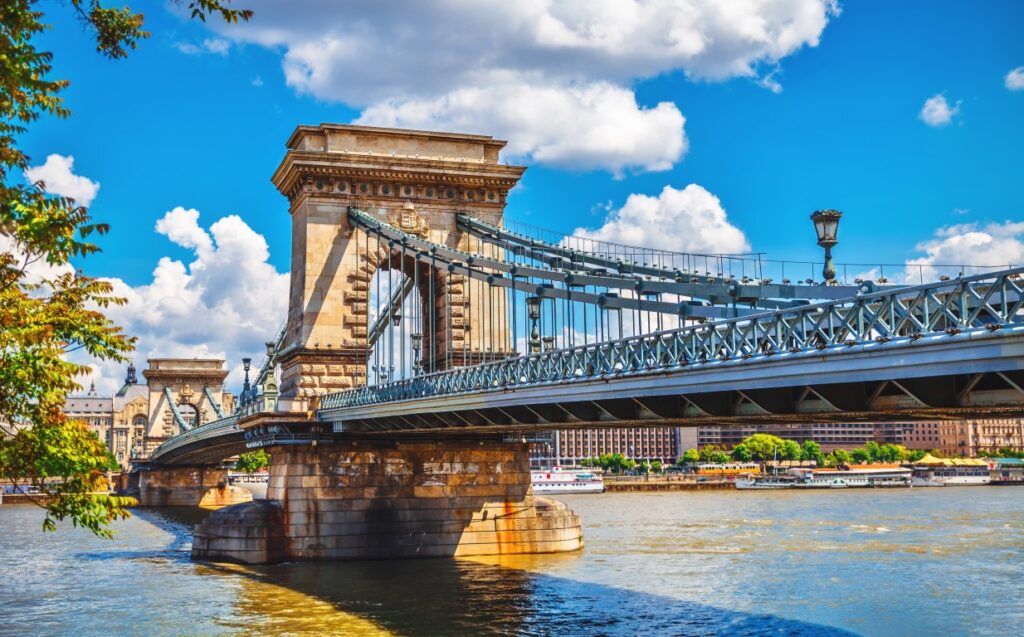
6. Stroll along the panoramic Pest quay to the Parliament
After a little break, continue your one-day tour in Budapest on the panoramic Danube quay until you reach the Shoes on the Danube Bank, and pay your respect to the victims of World War II. If you continue walking, you will soon get a close-up on the Gothic building of the Hungarian Parliament. This architectural masterpiece has almost 700 rooms full of frescos and tens of thousands of precious stones, the most valuable of which are the Holy Crown, the royal scepter and the orb of the first Hungarian kings, which are exhibited there. For those interested in stepping inside, we recommend buying a ticket in advance online.
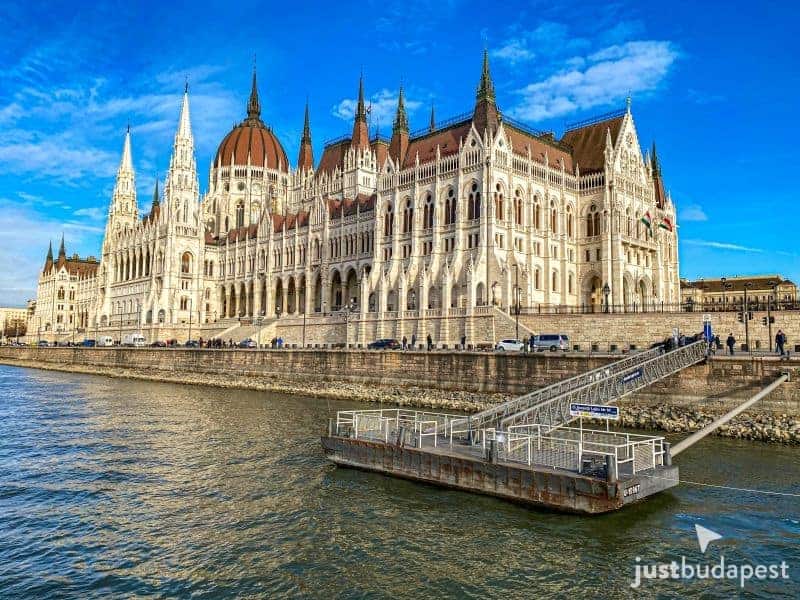
7. Try a Hungarian dish and take a sip of pálinka
No matter how many sights you’ve seen during your one-day visit to Budapest, you simply cannot leave without a local meal. Hungary is famous for its cuisine, so you’ll have plenty of delicious dishes to choose from: goulash soup, fisherman’s soup, chicken paprikash with noodles, stuffed cabbage, beef stew… just to name a few. You can find plenty of well-reclaimed restaurants in the two main walking streets of the inner city: Váci utca and Ráday utca. Although the Hungarian cuisine is pretty much meat-based, these days you can try vegan versions in places like Napfényes Étterem. And before you call it a day and bid farewell to Budapest, don’t forget to order a shot of pálinka – it will surely keep you awake on your way home.

Things to do during your 2-day visit to Budapest
Trying to pull the perfect weekend in Budapest? Have you already crossed all the must-see sight off your list? Don’t worry, we still have a few tricks up our sleeves for your 2nd day in Budapest.
1. Take in the downtown view from the top of the Basilica
Let’s start our journey again from Deák Square and with it, St Stephen’s Basilica. If this is your second day in Budapest, we recommend dedicating a bit more time to this iconic cathedral. Apart from it being the largest church in Budapest, the Basilica is also the home of the Holy Right, the mummified right hand of St. Stephen, the first king of Hungary. If you value a view more, let us guide you to the dome of the Basilica. The circular lookout offers a breath-taking panorama over downtown Budapest. You can get a ticket (1,000HUF, approx. 3 euros) at the checkout right next to the main gate, and either walk up the stairs or take the escalator. The lookout opens at 10AM, but unfortunately, it’s closed indefinitely from 21 September 2020[MOU16] . If you fancy a cocktail with a view, we recommend coming back in the evening to High Note Skybar, the unique rooftop bar right next to Basilica, to give a right start to the Budapest nightlife.
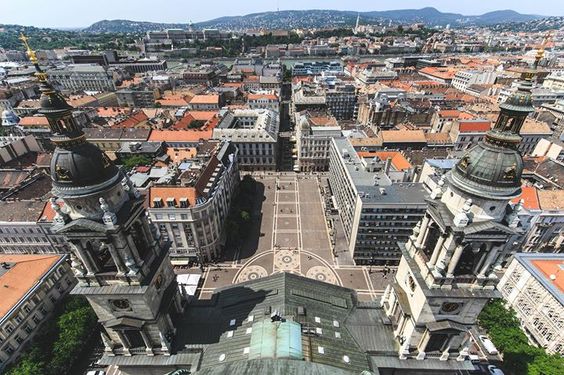
2. Get a taste of Hungary at the Great Market Hall
Yesterday you may have got a bite or two from the local cuisine, but Hungarian food has a lot to offer on the street food scene as well. Start your second morning in Budapest with a filling breakfast or brunch hand-picked from local goods. Just 3 tram stops (or some 15-minute walk) from Deák tér, you can reach the riverbank and with it, Fővám tér. With great views to the Buda side and the green pillars of Liberty bridge, this spot is really a tourist’s heaven. On one corner, you can explore the Hungarian gastronomy in the form of a real market experience at the Central Market Hall (open between 6AM-5PM from Monday to Saturday but closed on Sunday!). Alternatively, just across the street, you can step into the main walking and restaurant street of the city, Váci utca.
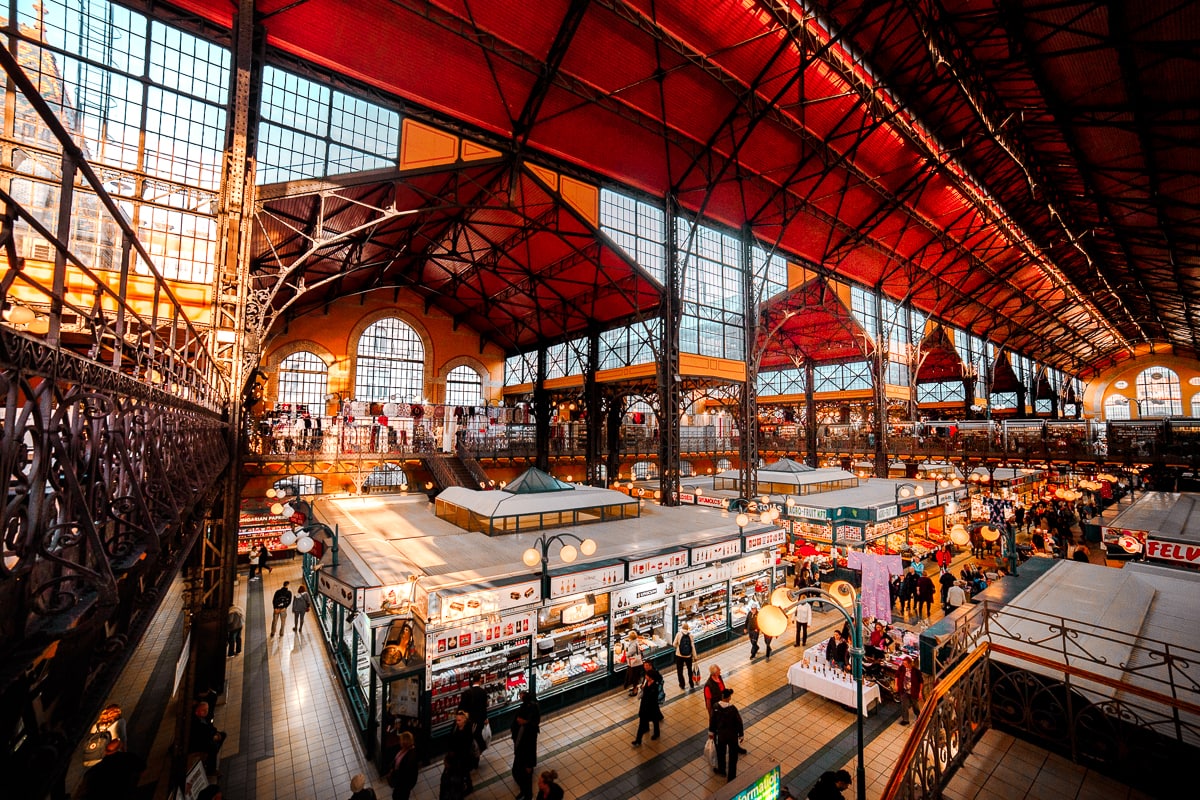
3. Stroll along the fashion street to Vörösmarty tér
Once you filled your stomach with tasty treats at the Great Market Hall, it’s time to wander around the fashion street of Budapest, Váci utca. If you are visiting during December, you will end your stroll in the biggest Christmas market of the city at Vörösmarty tér, full of mulled wine and chimney cake. If you’re in Hungary, you should definitely try one of the locals’ favorite and special desserts, the chimney cake. The chimney cake of Budapest is one of the most delicious treats which is available in many flavors -it is definitely a must try!In other seasons, the ones with a sweet tooth can check out the dessert menu of Café Gerbeaud, the statement confectionery of Budapest. We recommend getting a Gerbeaud cake (zserbó), a layered cake with walnut and apricot jam filling.
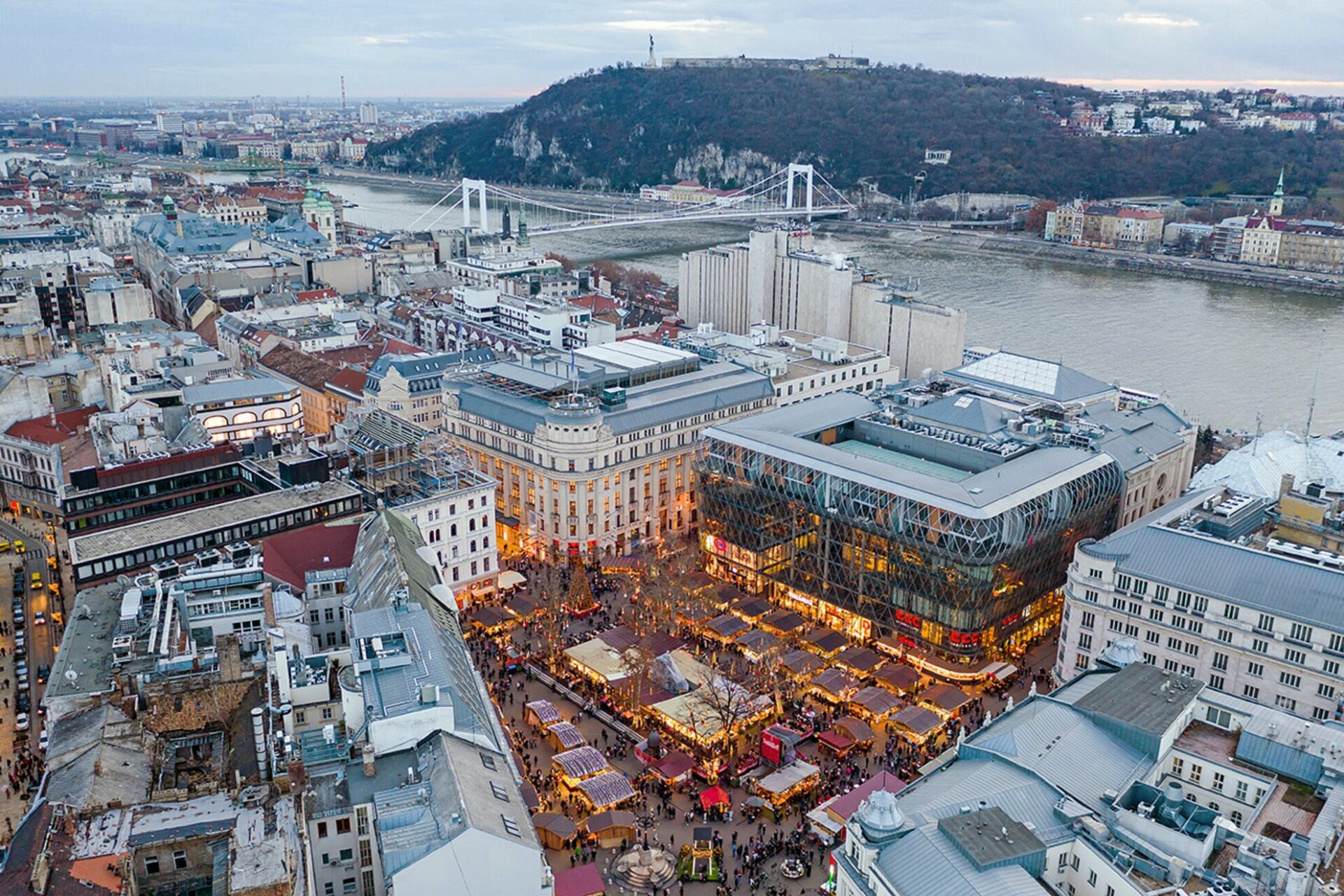
4. Meet chieftains and kings at the Heroes Square
It’s time to meet the heroes of Hungary. To get there, let us invite you to a joyride with the Millennium Underground (Kisföldalatti), aka Metro 1. This is the oldest metro line in Budapest, and also a UNESCO World Heritage Site. You can get on M1 right at Vörösmarty tér (don’t confuse it with the similar-sounding Vörösmarty utca) and take it to Heroes Square (Hősök tere), the grand group of statues guarding the entrance to the City Park. Together with the museums (Museum of Fine Arts, and Palace of Art) on each side of the square, the Andrássy Avenue in front of it, and the City Park behind it, the whole neighborhood was built in 1896 for the millennial celebrations commemorating the 1,000th anniversary of the foundation of the Hungarian state. The 14 statues of the Millennium Monument represent central figures of the Hungarian history from Magyar chieftains to kings and statesmen, guarded and guided by the towering monument of Archangel Gabriel.
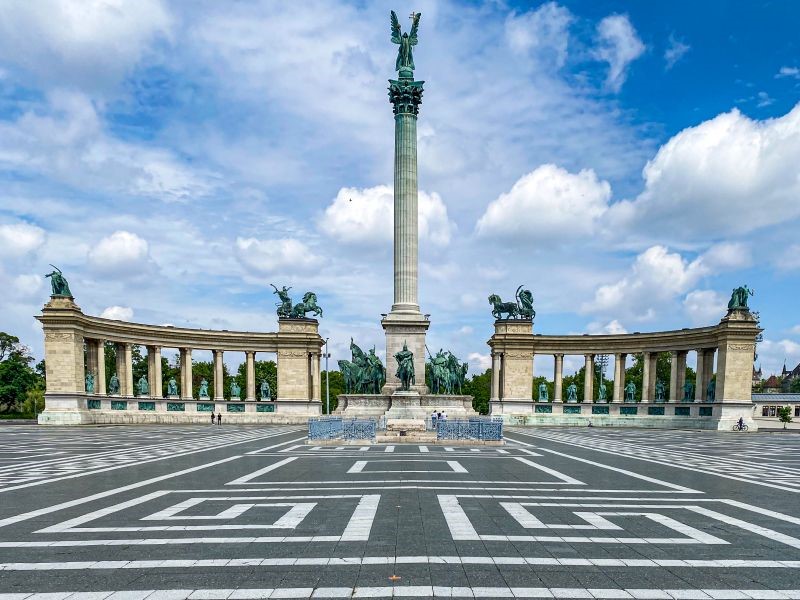
5. Wander around Vajdahunyad Castle at the City Park
Just behind the monumental statues of Heroes Square, you can wander around the greenery of the City Park (Városliget). Built as the main public park of Budapest, it is one of the locals’ favorite spot for outdoor activities – besides Margaret Island (Margitsziget). In the neighboring grounds, you can find the Budapest Zoo sided by the Budapest Circus and an artificial boating lake turned into a fairytale ice rink (Városligeti Műjégpálya) during wintertime with the fairytale-like Vajdahunyad Castle in the background. The postcard-perfect façade of the castle deserves a closer look even if you stay in Budapest just for 2 days. Originally built as a temporary wood installation for the millennial celebrations, the Vajdahunyad Castle became so popular that it was reconstructed to become permanent. The eclectic castle mimics different architectural styles, like Romanesque, Gothic, Baroque, and Classicist, taken from different castles across historical Hungary – including the classic Transylvanian Gothic model. Today, the castle is home to the Hungarian Agricultural Museum, and you can peek into some of its towers during guided tours.
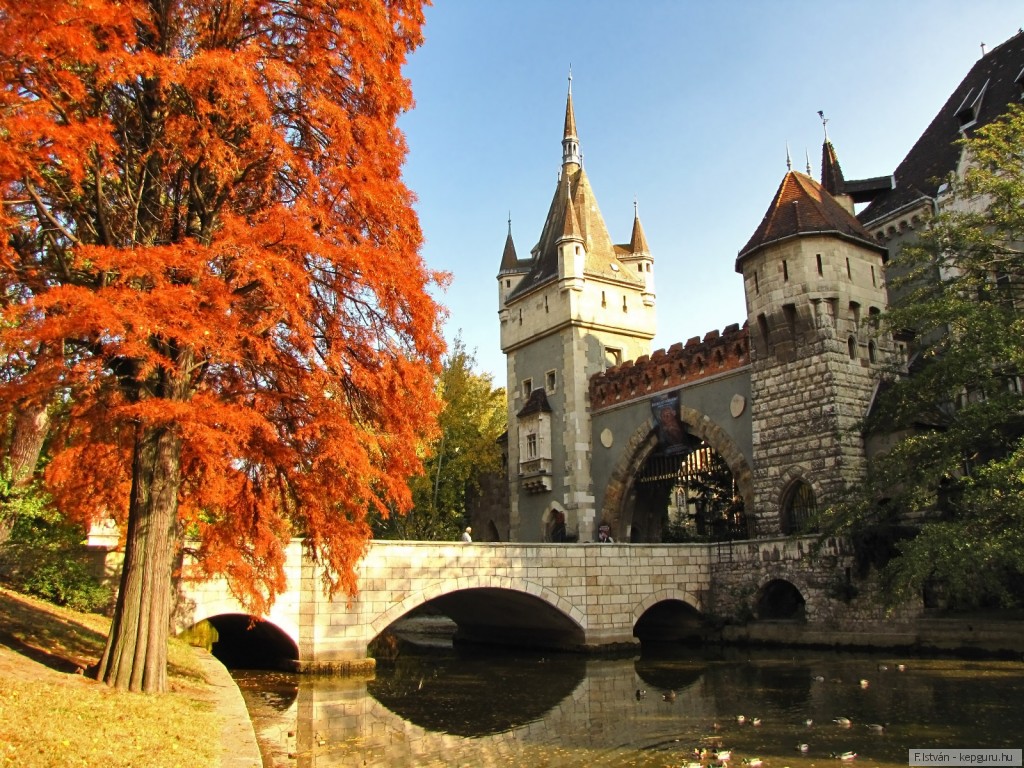
6. Dip your toes into the healing waters of a thermal bath
Have you seen it all in the city? Are you looking for a relaxing end to your 2-day trip in Budapest? Finish off your action-packed sightseeing by getting soaked at one of the thermal baths of the city. Budapest is often called the spa center of Europe since you can find natural hot springs with healing waters all around the city – dating back to the Ottoman era. Depending on your preference, you can choose the most famous Széchenyi Baths in the City Park, the historical ones like Gellért Baths and Spa or Király Baths with unique Turkish pools and stream cabins, the recently upgraded Rudas Baths with a panorama pool, or the lesser-known secret gem, Veli Bej.
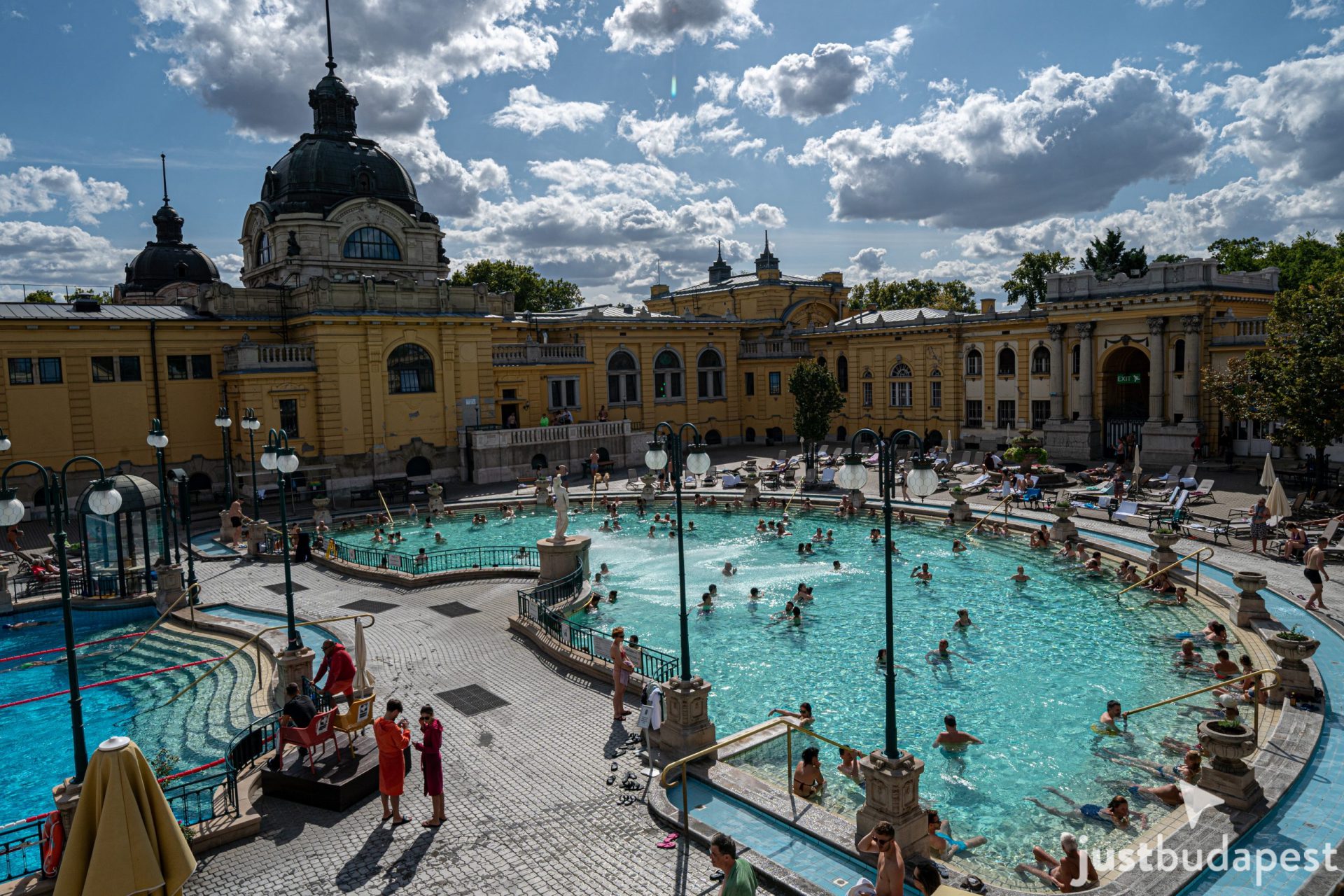
Things to do during your 3-day visit to Budapest
Are you spending your well-deserved 3-day city break in Budapest? If you are looking for some lesser-known travel tips in the Hungarian capital, you came to the right place. From mystery hunting in an underground labyrinth and nuclear bunker to dancing through the night in ruin pubs, and everything in between, we’ve cherry-picked the coolest local to-dos beyond the must-see attractions.
1. Take a stroll at the Castle Garden Bazaar
Not far from the Elisabeth Bridge and the Rudas Baths on the Buda side, covering the slopes below Buda Castle, lies the Castle Garden Bazaar (Várkert Bazár), the recently renovated 19th-century Neo-Renaissance complex. Acting as a spectacular entrance to the royal palace uphill – with a hidden escalator for those needing one –, today this lovely garden houses exhibition areas, cultural venues, as well as cafés and restaurants. If you need a slow start to your 3rd day in Budapest, it’s just the right place for that. And since the hop-on hop-off buses also stop here, you can easily get here from Deák tér. Alternatively, you can take bus Nr. 16 from Deák tér to the nearby Clark Ádám tér.
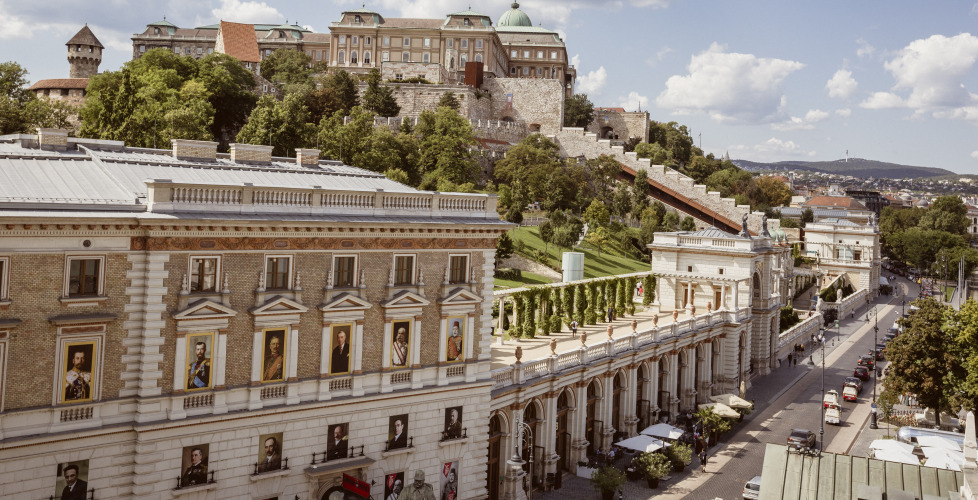
2. Go mystery hunting to the Buda Castle Labyrinth
For those interested in legends and mysteries, we have a special treat in the Castle District. A vast and complex system of natural caves and underground tunnels run underneath Castle Hill. Accessible from Uri utca, the Buda Castle Labyrinth is open from Monday to Sunday between 10AM-7PM, and you can visit it on your own for 3,000HUF (only cash in Hungarian currency Forints is accepted) or on a guided Oil Lamp Tour (starting every evening at 6PM for the same price). And if a spooky night tour in an underground labyrinth is not chilling enough for you, you can venture deeper in the passages and explore the subterranean emergency hospital and nuclear bunker (officially called Hospital in the Rock, Sziklakórház) at Lovas út 4.
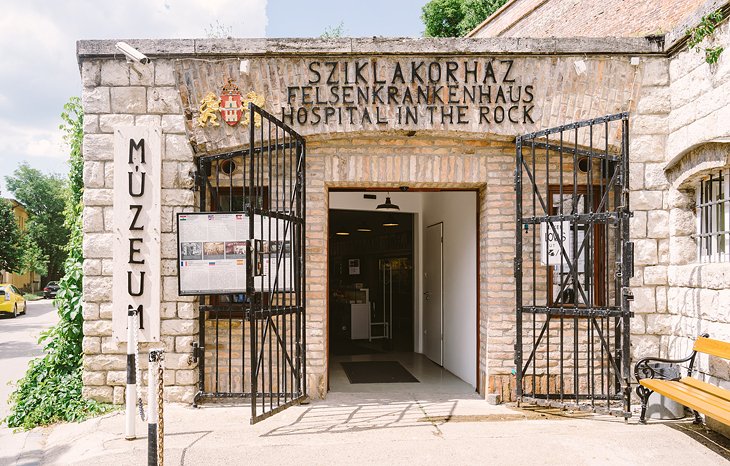
3. Dive into Hungarian history, culture, and art
If visiting subterranean hospitals and nuclear bunkers is not your cup of tea, don’t worry, we’ve lined up more traditional museums for you to pick from. Unlike Berlin, which has its own island for museums, the cultural venues of Budapest are scattered around the city, so you will want to plan your cultural tour ahead. On the Pest side, we recommend starting at the Hungarian National Museum for some historical and cultural clues, then checking out the recently renovated Museum of Fine Arts for the best artworks of all times, and finishing off at the House of Terror for a closer look at the Communist era. Alternatively, if you’d prefer exploring the museums of the Castle District, the Hungarian National Gallery, the Budapest History Museum, and the National Széchényi Library are all great options.
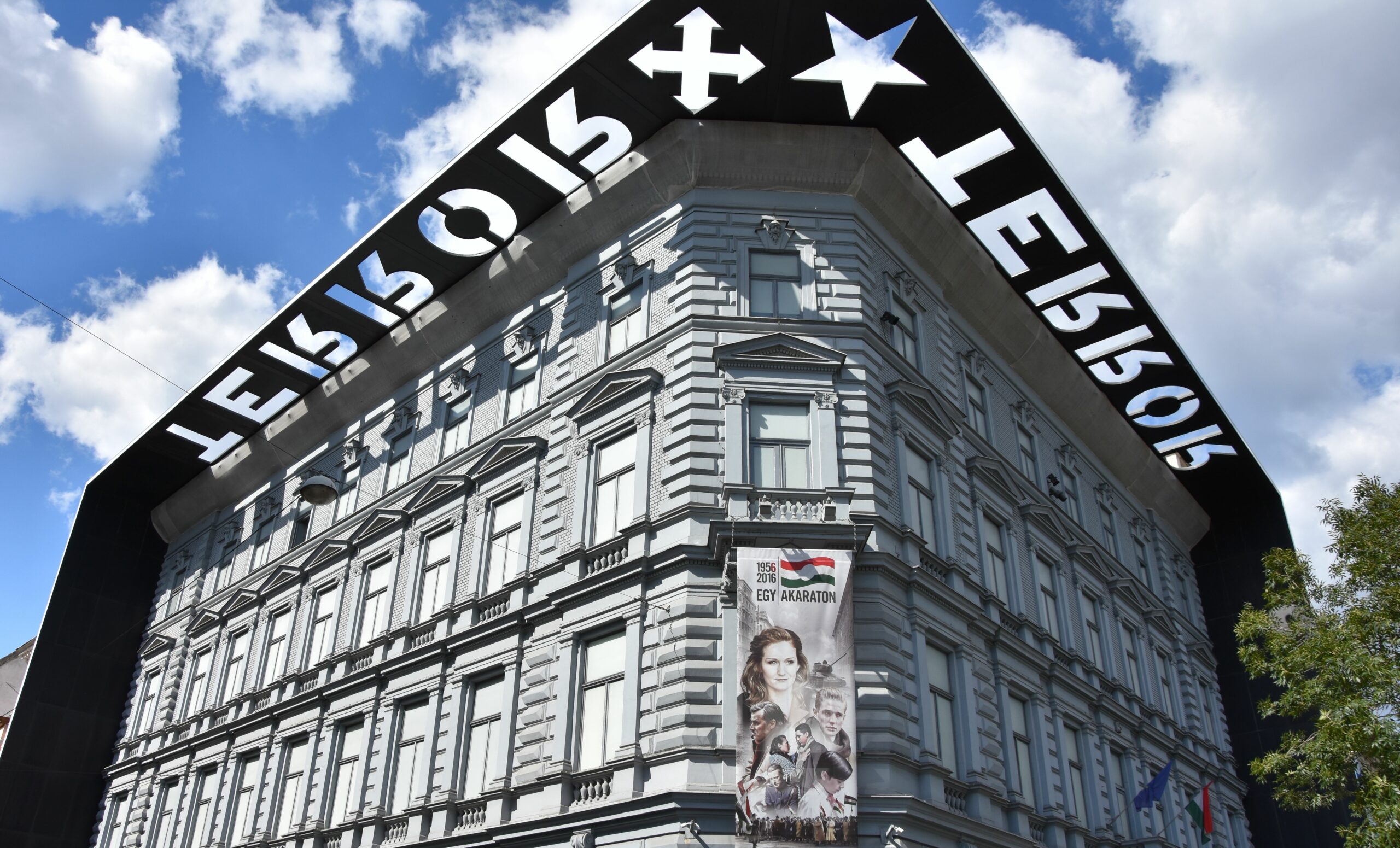
4. Go cruising on the Danube
If you’ve ticked it all both on the Buda and the Pest side, why not get a new perspective on the city? Get mesmerized by the beauty of Budapest by cruising through the Danube. The river offers breathtaking views of Buda and Pest and all the majestic bridges of the city – especially by night. Combine the pleasant view with the more pleasant bites and get yourself a dinner cruise with your plate packed with Hungarian delicacies. Or try the one and only floating bus, RiverRide, that looks like a bus but can also swim in the Danube.
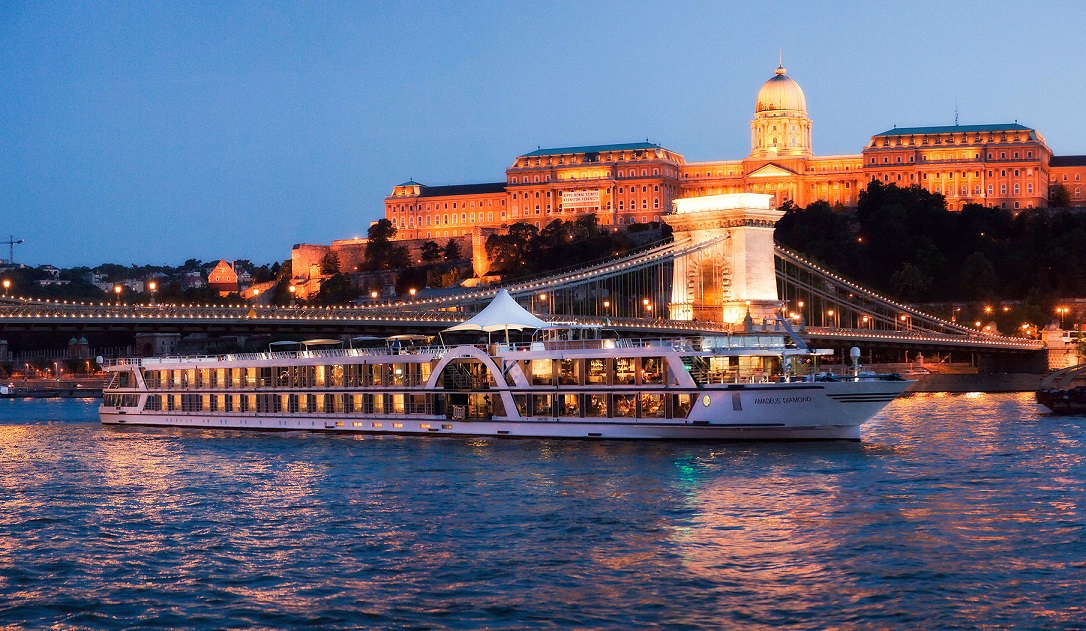
5. Explore the ruin pubs of the Jewish District
Ruin pubs are a rather contemporary phenomenon that spread quickly in the inner city in the past 20 years to revive the empty and weathered buildings of the Jewish District. Lacking the money to fully rebuild or renovate them, the owners came up with a whole new concept: turning the abandoned buildings into shabby yet charming ruin pubs only Eastern Europe can pull. The first and most famous of these rugged bars is Szimpla Kert, located in Kazinczy utca, the heart of pub life in Budapest. If one venue is not enough for your pub crawl in Budapest, you can also explore the double ruin-power of the recently fused Instant & Fogasház, followed by Doboz, the “premium ruin bar”. Whichever you choose, get ready for an unparalleled pub experience. Cheers, or egészségedre, as the Hungarians say!
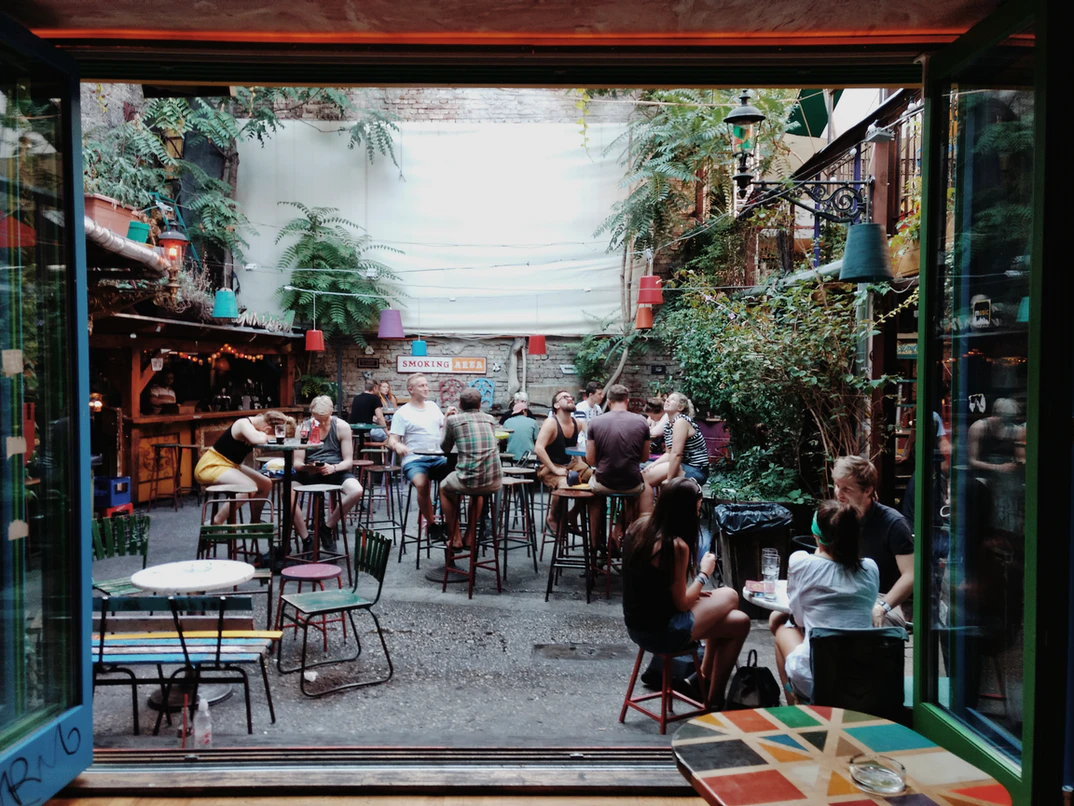
Q & A
- What are the best ways of exploring Budapest in 1-2-3 days?
- Tourists have plenty of choices to explore Budapest, from walking around the inner city to taking local public transport services called BKK and everything in between, including bike, electric scooters, and hop-on hop-off bus tours.
- Are there 1-2-3 day passes for public transport in Budapest?
- There are several ticket options for BKK, the local public transportation company in Budapest, from a single ticket for 350HUF (approx. 1 euro) to different daily tickets and travelcards for individuals and groups from 24-hour to 120-hour ones, some of which include free entries or discounts to museums, spas, and cultural venues. Plus, EU citizens aged 65+ can use public transport services for free.
- What are the must-see sights of Budapest?
- If you are planning a short trip to Budapest, be sure to visit the Hungarian Parliament Building, Buda Castle, Fisherman’s Bastion, Matthias Church, Gellért Hill, St. Stephen’s Basilica, Heroes Square, and one of the thermal spas, like Széchenyi or Gellért Baths. And don’t leave without tasting some of the local dishes, including goulash, chicken paprikash, and lángos.
The bridges of Budapest are marvelous. If you want to learn more about these amazing structures, read our article about the topic.
Where is Budapest? What pleasures does this amazing city offer to the tourists? If you are interested, you should read our article on the topic. As everyone knows, who once visited Budapest, this is the city, which you will never forget in your life!
The central market hall is one of the most iconic places in the capital of Hungary. If you visit Budapest, check out this nice market which offers you the best food and delicacies.
Chain bridge Budapest – the amazing construction that you have to visit if you are in the city!
Do you want to know everything about the Hungarian currency? Check our article in the topic!






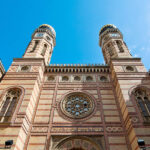


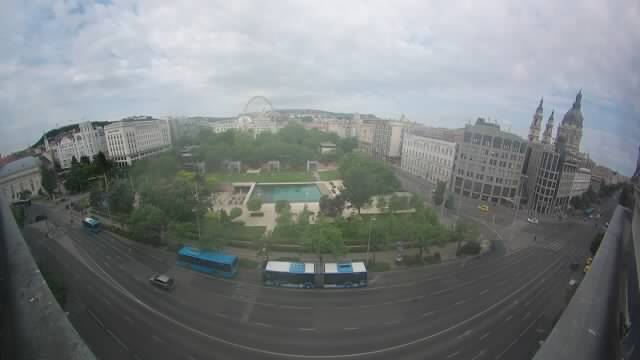
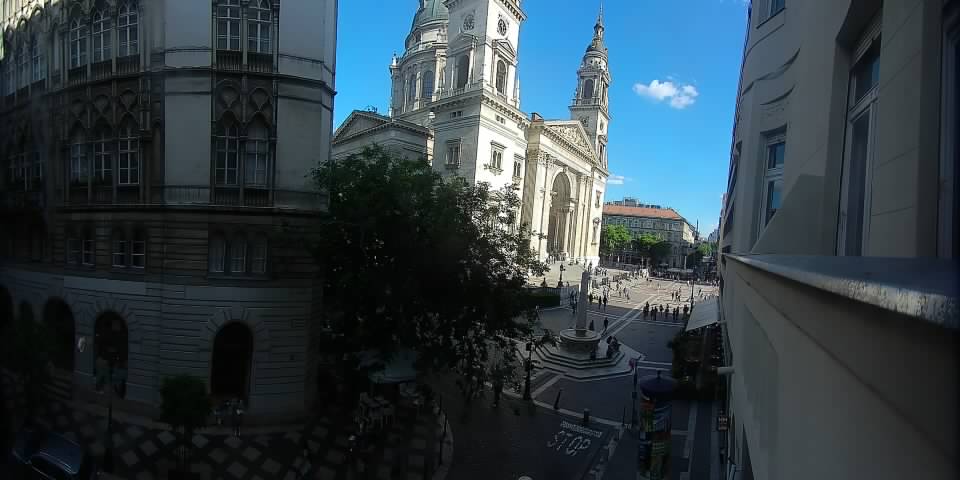

Your experience is important.
Anything you have not found?
Ask a Question
Please log in to write a review.
There is no review yet.